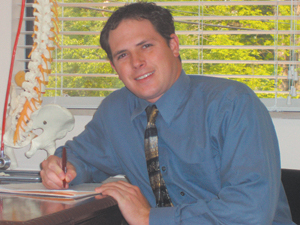A HEALTHY DAY
 The Mystery of Diabetes
The Mystery of Diabetes
One of the biggest problems in our society today is diabetes. What many people don’t know is that there are two types of diabetes, (Type I and Type II). If someone has Type I diabetes, it means that they have a problem with the pancreas producing insulin. Now, the role of insulin is very detailed but in a nutshell it goes like this; the pancreas releases insulin, which travels through the vascular system and to different tissues of the body. When insulin reaches these tissues (liver, muscle, adipose, etc.) it attaches to an insulin receptor on the cell surface. The insulin then goes into the cell, recruits glucose transporters to go to the cell surface which when attached allows glucose to enter into the cell. This glucose is then broken down and is eventually released as ATP or cellular energy. As you can see, insulin is essential to human survival. Another name for Type I diabetes is juvenile-onset diabetes in that it is something you are born with and the time of symptom onset is undetermined. It is also called insulin dependant diabetes since there is a problem with your body producing insulin and you need insulin injections for survival.
The other is Type II diabetes. When someone has this type, it means that their pancreas produces enough insulin but there is something wrong with the receptors for the insulin to attach to. Another name for this type is non-insulin dependant diabetes or adult onset diabetes. The pathogenesis of this disease consists of the following; when there is too much glucose in the blood stream, seen mostly with obese and the elderly, insulin is released at a rapid pace and the amount of receptors on each cell cannot match the in-surge. This results in a further depletion and resistance of insulin for each tissue along with a constant surge of insulin from the pancreas. This “insulin surge” can cause an increased stress on the pancreatic (beta) cells. Eventually these cells get depleted and destroyed leading to eventual Type I, insulin dependant, diabetes.
Type I diabetes needs medical intervention and cannot be prevented for the most part but Type II can be prevented and controlled. Risk factors for Type II diabetes include: obesity, lack of physical activity, old age, family history, and hypertension. Signs and symptoms include: hyperglycemia (high glucose in the blood stream) that pulls fluid from body tissues causing dry mucous membranes, and poor skin turgor. Long term effects may include retinopathy, nephropathy, atherosclerosis, and peripheral neuropathy. The cause of peripheral neuropathy is from the increased glucose damaging arteries and decreasing the amount of circulation.
Type II diabetes can be prevented and controlled by monitoring blood glucose levels, eating healthy and continuous physical activity. If someone is insulin dependent, right now there is no cure for the disease but some of the symptoms can be controlled. One of these is peripheral neuropathy and ulcers. This can be done with a new technology called MIRE or Monochromatic InFared Technology. This technology consists of devices, which release light into the skin (890nm) that cause the release of nitric oxide from hemoglobin on red blood cells. This causes vasodilatation (arteries/veins expand) which increases circulation. This increase in circulation allows for the proper nutrients to get to the nerves and allow them to heal. If you would like to know more about this technology or have any questions on how to maintain proper nutrition/diet along with an exercise program that can help prevent diabetes, give us a call at Nill Family Chiropractic & Wellness Center. 260-459-2205. Otherwise, ask your family physician about diabetes and request to get a blood glucose test, it could save your life.
Thank you and have a healthy day.
Dr. James P. Nill D.C.
- Celebrating 20 Years Of Community At The Stand - April 12, 2024
- First Positive Case Of Chronic Wasting Disease In Indiana - April 12, 2024
- Southwest Allen County Schools Embark On Major Tree Plantings - April 12, 2024

